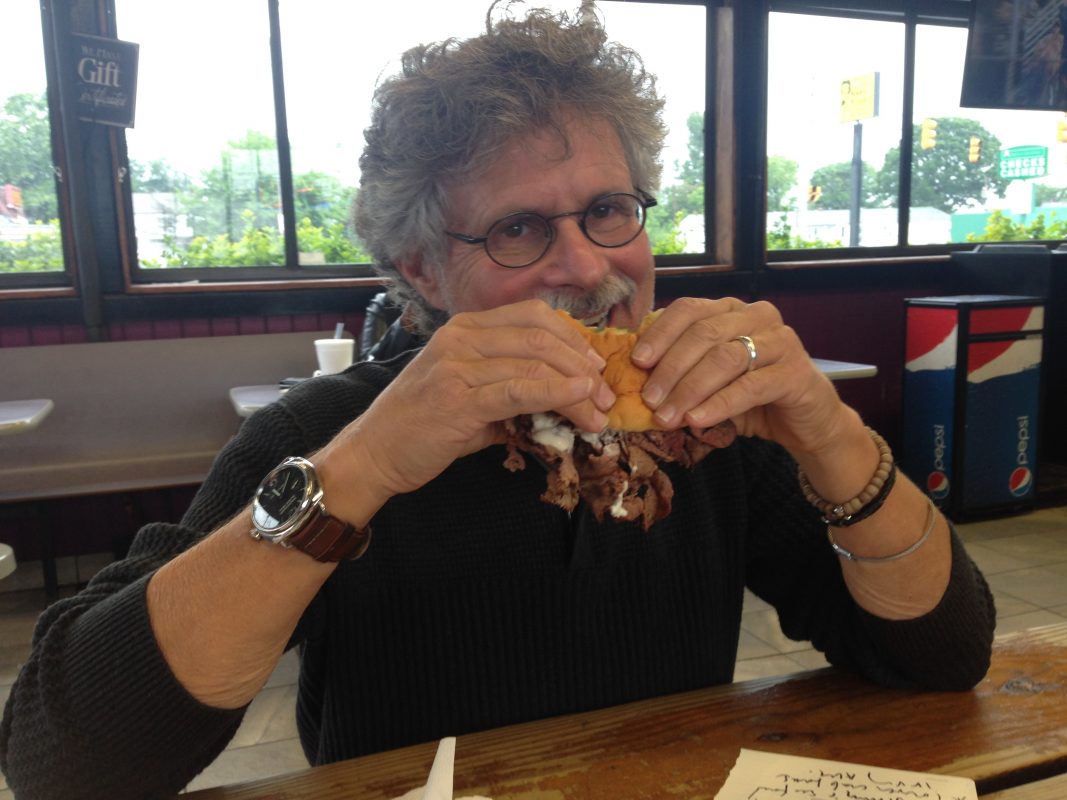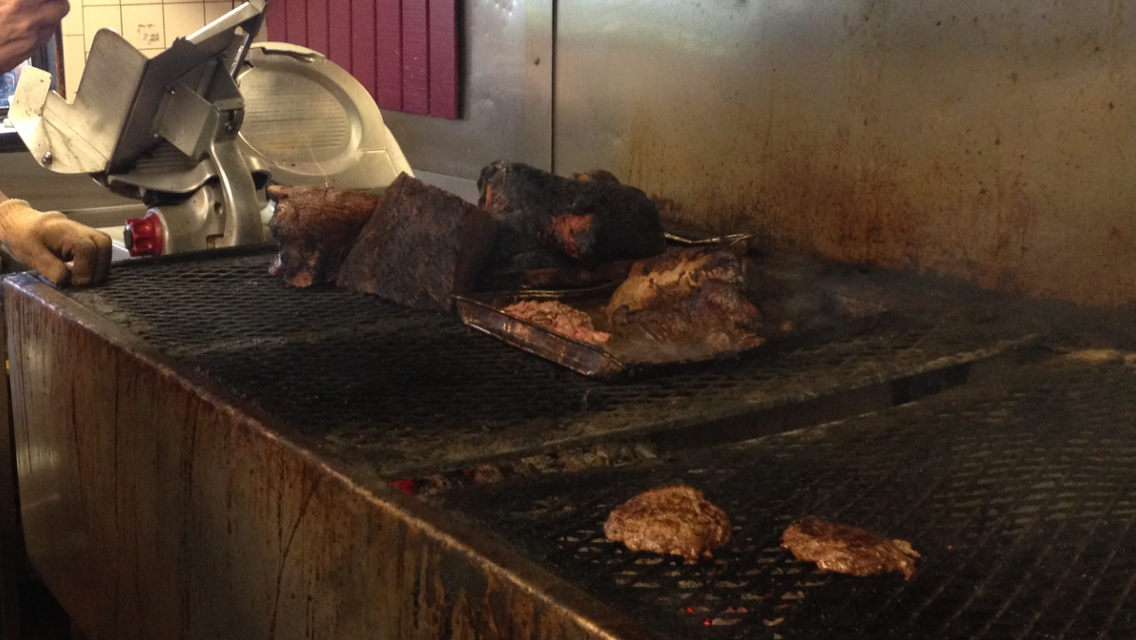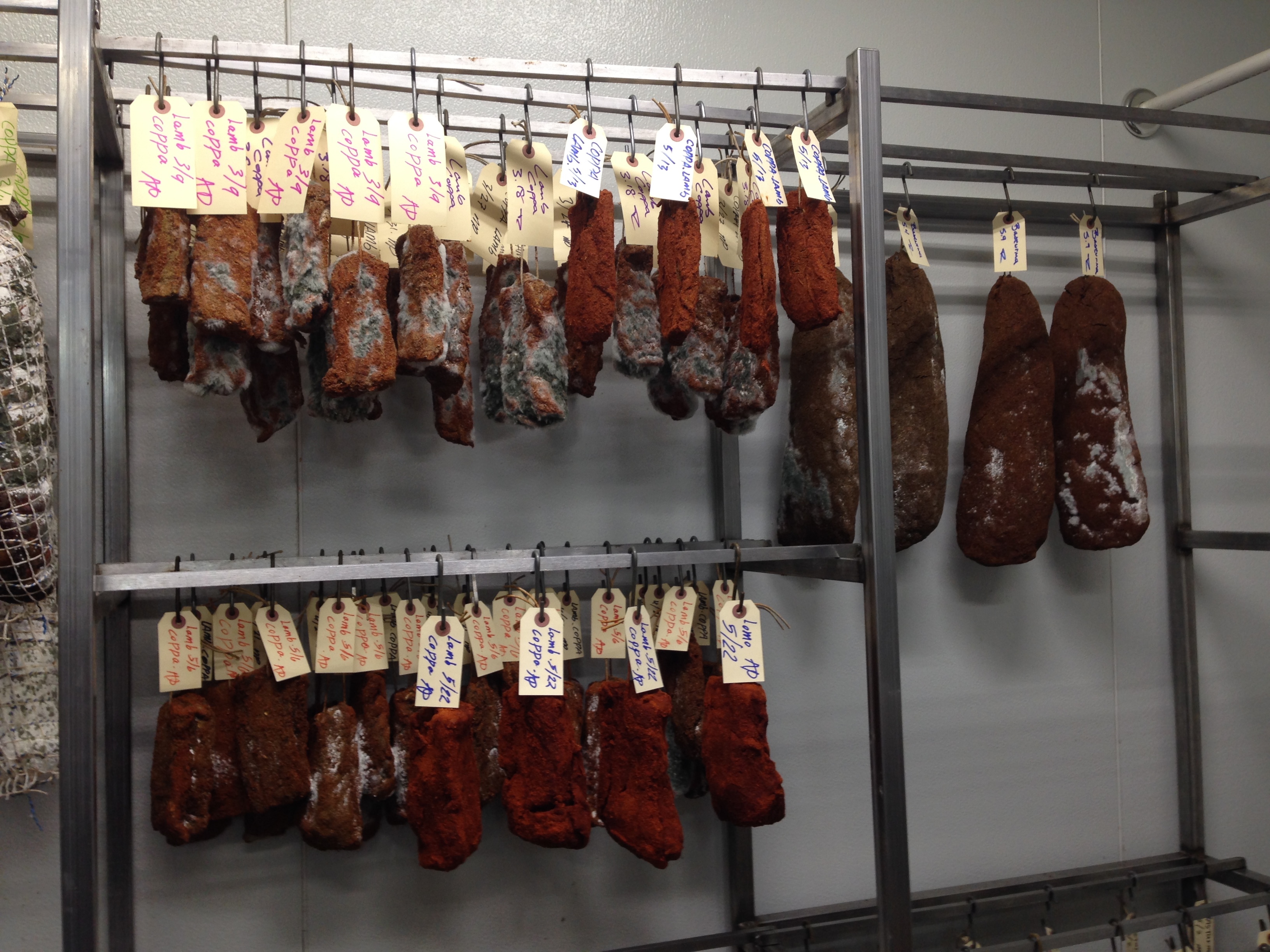
While stopped in his hometown in the midst of a cross-country book tour, Pikesville native-turned-barbecue guru Steven Raichlen spent a recent soggy Sunday evening touring two of Charm City’s most renowned smoke spots. Along for the ride, I picked the James Beard award-winning author’s brain about his barbecue expertise, favorite Baltimore memories, and his new book.
Raichlen, 63, who graduated from Milford Mill High School in 1971, is the author of five cookbooks and the host of Project Smoke on PBS—a cooking show that explores the art of smoking (low and slow) versus grilling (quickly cooking meat over high heat).
“Project Smoke was formed by the realization that all barbecue is smoked, but not all smoked foods are barbecue,” Raichlen explains, mentioning cold-smoking salmon and cheese or warm-smoking bacon or beef jerky. “Smoking isn’t a one-size-fits-all technique.”
His newest book of the same name hit shelves on May 10 and sheds light on a similar concept—including stories and outside-of-the-box recipes (think everything from smoked cocktails to smoked desserts) inspired by his travels.
Raichlen planned the itinerary for our tour, choosing to visit Chaps Pit Beef and Parts & Labor, noting a common thread between the two.
“Live fire,” he said. “I grew up in Baltimore, and to me, it was always a boiling and steaming culture. I grew up with the four C’s: crab, coddies, corned beef, and chocolate top. It was not live fire by any stretch.”
Our crawl started at Chaps, the 29-year-old Eastside stalwart stationed on Pulaski Highway. While browsing the lengthy menu, we were greeted by the owner, Bob Creager, who offered to show us around the kitchen.

Chaps’s cozy kitchen is comprised of a cafeteria-style counter full of side dishes, an old-school hand slicer, and a charcoal grill where its claim-to-fame bottom round flat pit beef is cooked for 90 minutes to two hours.
Per Creager’s recommendation, we ordered medium-rare pit beef sandwiches, and topped them with extra horseradish, pickles, and a few dollops of the restaurant’s Tiger Sauce—a mixture of horseradish and mayo. (According to Creager, the “too much of a good thing” theory doesn’t apply when it comes to the signature spread.)
Snagging a seat at a communal picnic table in the center of the eatery, we chowed down, discussing Creager’s favorite restaurants (he enjoys Alma Cocina Latina, The Food Market, and Woodberry Kitchen), Chaps’s upcoming second location in Aberdeen, and the evolution of pit beef in Baltimore.
“Pit beef was like a poor people’s party way back when,” Creager said. “Its roots are Eastern European but, as far back as we can see, it was popular for things like bull and oyster roasts. And more or less it was only in East Baltimore. You didn’t see it in Towson, Owings Mills, or on the Eastern Shore. It was just a Baltimore thing.”
After packing up leftovers, we headed to Spike Gjerde’s Remington hotspot Parts & Labor, which showcases the restaurateur’s signature farm-to-fork style and passion for whole-animal butchery.
Settling in at a table overlooking the hearth oven, Raichlen quickly perused the menu before suggesting that we find out what comes off of the grill first, and build our meal around that.
After meeting chef de cuisine Gerald Addison, we opted for a smattering of tasting dishes including smoked trout spread on a sourdough baguette, a Vietnam-inspired pigtail glazed in a sauce made of fermented soft-shell crabs and topped with peanuts, smoked Austrian Kasekrainer sausage filled with Appalachian cow’s milk cheese, roasted local cauliflower, and maple syrup-marinated rib cap with pickled kimchi.
Our meal at Parts & Labor made it even more evident that Raichlen has a deep passion for fired cuisine and a natural affinity for detecting smoke within the first bite.
“I like to call smoke the umami of barbecue,” he said. “It has a way of making food taste more like itself. It’s almost like you’re shining a different light on familiar foods and seeing them from a different angle.”

A highlight was touring the restaurant’s curing room, including its house-cured dry-aged pork loin, lamb coppa, n’duja sausages, and variety of salamis.
We returned to our table where—in what Raichlen called “an exquisite twist of irony”—a pair of vegan diners had just been seated nearby. (“This is my favorite restaurant in the city,” one shared. “The vegetables are phenomenal.”)
Added Addison: “I really like vegetables and its super important to me that this be a place where vegetarians can eat. People think it’s such a meat-centric restaurant, but I actually get way more excited about produce than I do about meats.”
Over a hefty scoop of brown-butter ice cream swimming in espresso, Raichlen reflected on the evolution of Charm City’s food scene.
“It’s funky and unpretentious, and it’s on its way to becoming the Portland of the East Coast,” he says. “Baltimore always had good food, but now it has sophisticated food.”
